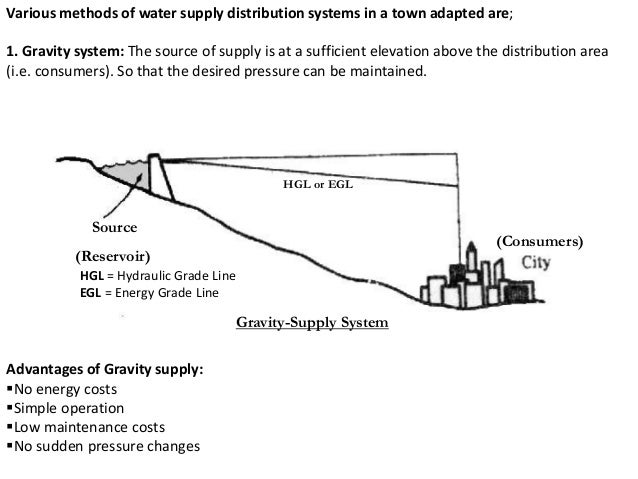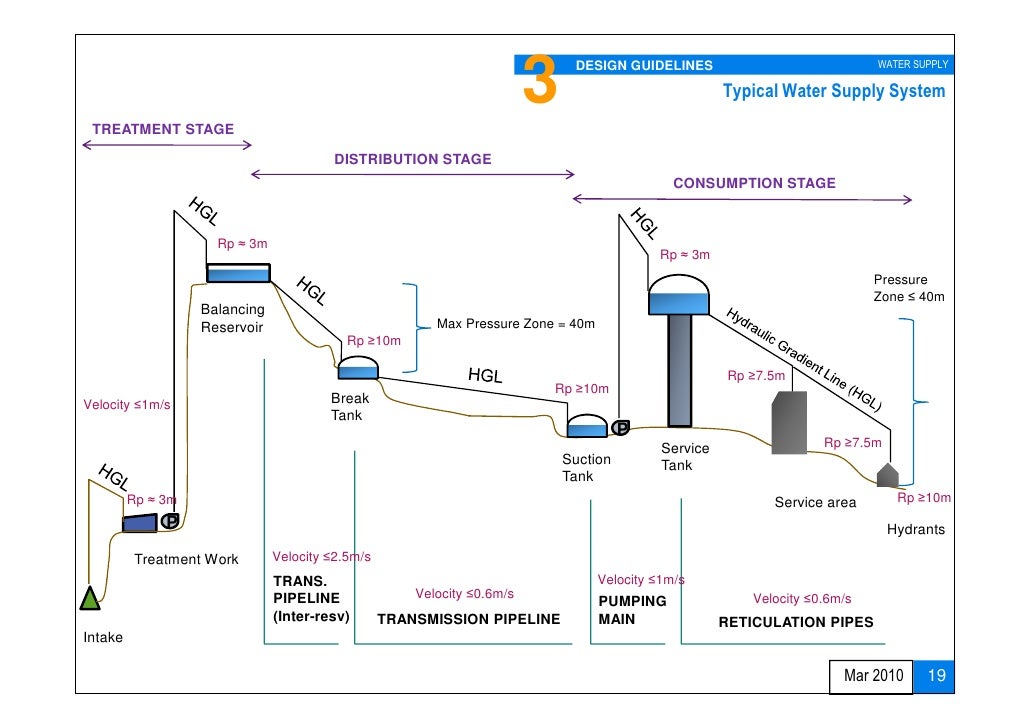- The hydraulics notions useful to design water supply system. Why Ensure a basic and common understanding of the necessary theory to design water supply system. Duration of the training 15 to 30 hours Generality about this course This course is the first part of the Design of Water Supply System.
- The 2019 update estimated that in 2017, 29% of the global population (2.2 billion people) lacked “safely managed drinking water”– meaning water at home, available, and safe. 55% of the global population.
California’s Central Valley is known as one of the most productive agricultural regions on earth, but it was not always this way. For a long time, the Central Valley was ranching country. And then it was farming country, but was farmed “dry,” meaning without supplemental irrigation. It wasn’t until the population influx in the 1850s with the gold miners and the development of a pump that there was a drive to make the Central Valley intensively agricultural.
After decades of pumping water for irrigation in the Central Valley and a drought from 1928-1934, the Central Valley Project was conceived as a plan to ensure water supply reliability and protect it from floods.

Learning Objectives
It is important to determine the amount of water available in terms of quantity and supply rate, BEFORE choosing an irrigation system. Water entitlements - 'Unbundling' In the Shepparton Irrigation Region, irrigation farms have an entitlement for water from the Goulburn-Murray Water (G-MW) (external link) channel system. The hydraulics notions useful to design water supply system. Why Ensure a basic and common understanding of the necessary theory to design water supply system. Duration of the training 15 to 30 hours Generality about this course This course is the first part of the Design of Water Supply System methodology. Version 2.2: Public Water Supply Systems Search Parameters Water System No. Water System Name: Principal County Served Water System Type.
After reading this section, you should be able to:
- Identify and critique the purposes of the Central Valley Project
- Anticipate the future crises for the Central Valley Project
The Central Valley typifies the challenge of California’s water supply. Most of the rainfall occurs in five months, from December to April. There is enough rain to regularly produce flooding in these months. But when the needs of the plants are the greatest for food production (spring and summer), there is little natural rainfall. Pumping supplemental water made the groundwater levels drop significantly in the Central Valley causing subsidence. Diverting river flows for irrigation brought in the salt waters to the Sacramento-San Joaquin Bay Delta, which meant saltier water, sometimes unfit for irrigation, came inland.
The state of California authorized the California Central Valley Project Act of 1933 to sell bonds to fund the project. However, due to the Great Depression, the bonds didn’t sell. The federal government took control of the project with the Rivers and Harbors Act of 1935 and the project was finally approved in 1935 for construction by the federal Bureau of Reclamation, which eventually took over operation.
The Central Valley Project was authorized with three key elements in its mission: flood control, water for irrigation and power generation. Water quality was added later to the mission as well as recreation and fish and wildlife enhancement.
Although the Central Valley Project is the largest of the federal water reclamation projects and includes reservoirs capable of storing 11 million acre-feet of water, it has a fairly simple structure. Water is stored in Shasta Reservoir and Shasta Dam acts as flood control for the Sacramento River. The Trinity River supplements the Sacramento River. The San Joaquin River supplies areas south of the Delta.
The Central Valley Project shares some facilities including San Luis Reservoir with the State Water Project. The photo below shows Shasta Dam, which is exclusively used by the Central Valley Project.
Misconception Alert!
Many people believe that Shasta Lake is part of the State Water Project. As you learned in this section, this is part of the Central Valley Project. The State Water Project has another larger reservoir that stores water in Northern California, Lake Oroville. These reservoirs are typically confused by many people.
The Central Valley Project Improvement Act in 1992 allocated water for fishery restoration. This is similar to Decision 1631 in that a water development project was re-evaluated with current environmental norms. The allocation for fishery restoration is 800,00 AFY, which is perceived as enormous by some.This was a considerable change in the mission of the Central Valley Project from water supply reliability, irrigation, and power generation to fish and wildlife enhancement.
Try It!
- Compare and contrast the Los Angeles Aqueduct and Central Valley Project.
- Investigate potential challenges to the Central Valley Project in the future.
Key Terms
California Central Valley Project Act of 1933—Authorized by the state of California to sell bonds to fund the Central Valley Project. However, due to the Great Depression, the bonds didn’t sell.
Central Valley Project Improvement Act in 1992—Allocated water for fishery restoration in the Central Valley Project
Rivers and Harbors Act of 1935—Authorized by the federal government to fund the Central Valley Project in 1935 for construction by the federal Bureau of Reclamation
Water is at the core of sustainable development and is critical for socio-economic development, energy and food production, healthy ecosystems and for human survival itself. Water is also at the heart of adaptation to climate change, serving as the crucial link between society and the environment.
Water is also a rights issue. As the global population grows, there is an increasing need to balance all of the competing commercial demands on water resources so that communities have enough for their needs. In particular, women and girls must have access to clean, private sanitation facilities to manage menstruation and maternity in dignity and safety.
At the human level, water cannot be seen in isolation from sanitation. Together, they are vital for reducing the global burden of disease and improving the health, education and economic productivity of populations.
Water-related challenges
- 2.2 billion people lack access to safely managed drinking water services. (WHO/UNICEF 2019)
- Over half of the global population or 4.2 billion people lack safely managed sanitation services. (WHO/UNICEF 2019)
- 297,000 children under five die every year from diarrhoeal diseases due to poor sanitation, poor hygiene, or unsafe drinking water. (WHO/UNICEF 2019)
- 2 billion people live in countries experiencing high water stress. (UN 2019)
- 90 per cent of natural disasters are weather-related, including floods and droughts. (UNISDR)
- 80 per cent of wastewater flows back into the ecosystem without being treated or reused. (UNESCO, 2017)
- Around two-thirds of the world’s transboundary rivers do not have a cooperative management framework. (SIWI)
- Agriculture accounts for 70 per cent of global water withdrawal. (FAO)
- Roughly 75 per cent of all industrial water withdrawals are used for energy production. (UNESCO, 2014)
The right to water
One of the most important recent milestones has been the recognition in July 2010 by the United Nations General Assembly of the human right to water and sanitation. The Assembly recognized the right of every human being to have access to enough water for personal and domestic uses, meaning between 50 and 100 litres of water per person per day. The water must be safe, acceptable and affordable. The water costs should not exceed 3 per cent of household income. Moreover, the water source has to be within 1,000 metres of the home and collection time should not exceed 30 minutes.
Water and the Sustainable Development Goals
Sustainable Development Goal (SDG) 6 is to “Ensure availability and sustainable management of water and sanitation for all”. The targets cover all aspects of both the water cycle and sanitation systems, and their achievement is designed to contribute to progress across a range of other SDGs, most notably on health, education, economics and the environment.
The UN and Water
The United Nations has long been addressing the global crisis caused by insufficient water supply to satisfy basic human needs and growing demands on the world’s water resources to meet human, commercial and agricultural needs.
The United Nations Water Conference (1977), the International Drinking Water Supply and Sanitation Decade (1981-1990), the International Conference on Water and the Environment (1992) and the Earth Summit (1992) — all focused on this vital resource.
The ‘Water for Life’ International Decade for Action 2005-2015 helped around 1.3 billion people in developing countries gain access to safe drinking water and drove progress on sanitation as part of the effort to meet the Millennium Development Goals.

Recent milestone agreements include the 2030 Agenda for Sustainable Development, the 2015-2030 Sendai Framework for Disaster Risk Reduction, the 2015 Addis Ababa Action Agenda on Financing for Development, and the 2015 Paris Agreement within the UN Convention Framework on Climate Change.
2.2 Source Design Water Supply System Cody Cross
Water, Sanitation and Hygiene
Contaminated water and a lack of basic sanitation are undermining efforts to end extreme poverty and disease in the world’s poorest countries.
In 2017, 2 billion people worldwide did not have access to basic sanitation facilities such as toilets or latrines. 673 million people still practised open defecation. According to the WHO/UNICEF Joint Monitoring Programme for Water Supply and Sanitation, at least 1.2 billion people worldwide are estimated to drink water that is not protected against contamination from faeces. Even more drink water, which is delivered through a system without adequate protection against sanitary hazards.
2.2 Source Design Water Supply System In Building
Unclean water and child mortality
Unclean water and poor sanitation are a leading cause of child mortality. Childhood diarrhoea is closely associated with insufficient water supply, inadequate sanitation, water contaminated with communicable disease agents, and poor hygiene practices. Diarrhoea is estimated to cause 1.5 million child deaths per year, mostly among children under five living in developing countries.
Improved sanitation and economic benefits
The links between lack of water and sanitation access and the development goals are clear, and the solutions to the problem are known and cost-effective. A 2012 WHO study shows that every US $1 invested in improved sanitation translates into an average global economic return of US $5.5. Those benefits are experienced specifically by poor children and in the disadvantaged communities that need them most.
2.2 Source Design Water Supply System Map
Celebrating water resources
2.2 Source Design Water Supply System Definition
Every year, there are two UN international observances on water and sanitation: World Water Day, 22 March and World Toilet Day, 19 November. Each day is marked by a public campaign which is about raising awareness of the issues, focusing attention on a particular theme, and inspiring action.
The International Decade for Action, ‘Water for Sustainable Development,’ started on World Water Day, 22 March 2018, and will end on World Water Day, 22 March 2028.
The Decade is about accelerating efforts towards meeting water-related challenges, including limited access to safe water and sanitation, increasing pressure on water resources and ecosystems, and an exacerbated risk of droughts and floods.
2.2 Source Design Water Supply System Ppt
Resources:
